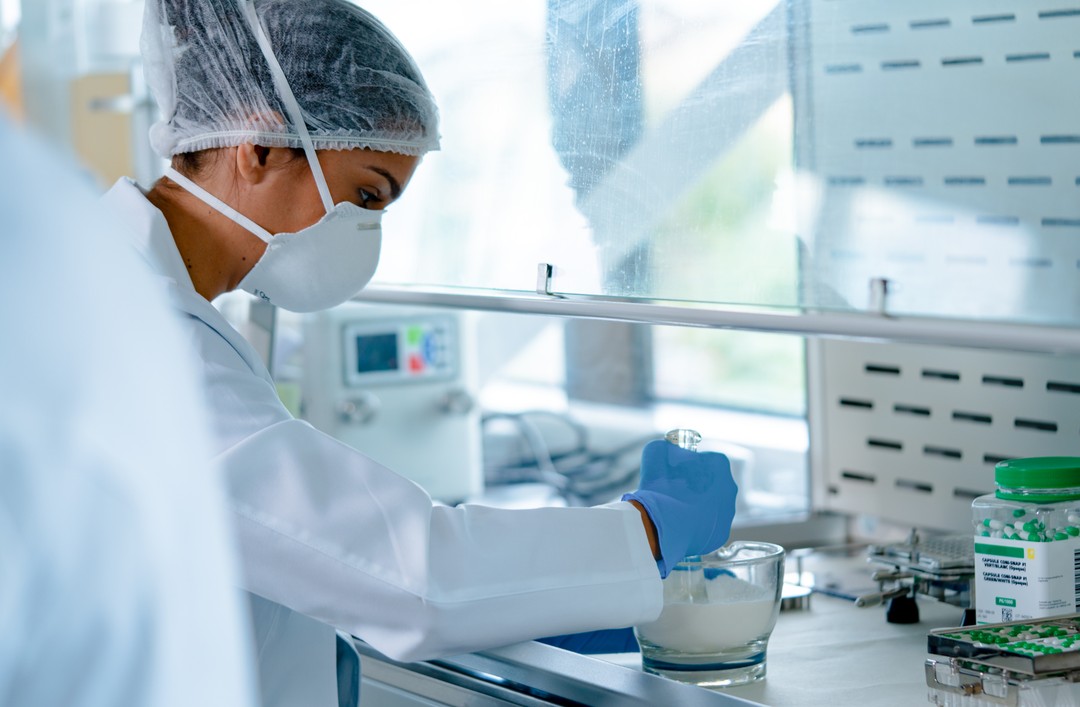| 9 minute read
Personalizing Dermatology Care: Selecting the Right Compounding Base

People are unique – and that couldn’t be truer than when considering dermatology conditions. Genetics, underlying health conditions, hormones, medications, bacteria, and contact exposure, among much more, all impact the severity of a dermatology condition and tolerance to therapy. Despite the sometimes-overwhelming amount of clinical and cosmetic products on the market, many patients and providers are left with inadequate solutions to common conditions. Unsuitable dose, suboptimal dosage form, or unwanted ingredients are just some examples of the challenges faced when compounding preparations for topical dermatologic use.
If you are a compounding pharmacist or dermatology healthcare provider, we don’t need to tell you that there is a big demand for personalized and innovative solutions to address these unmet needs. However, getting started can sometimes be daunting. Don’t worry though, we got you covered. Offering high-quality solutions to the topical treatment of dermatology conditions may be easier than you think. Read on to learn more.
Compounding for Personalized Dermatology Care
Treating dermatology conditions and their associated symptoms, such as inflammation, itchiness, redness, and irritation, typically involve topical therapies. When commercially available products don’t meet personal requirements, pharmaceutical compounding provides the flexibility to address an individual’s unique set of conditions, tolerances, and preferences, by carefully selecting cosmetic or active ingredients in the appropriate strength and dosage form (cream, lotion, gel, ointment, shampoo, or foam).
Topical bases used in compounding for dermatology conditions play a key role in the process development of a personalized formulation, such as drug-base compatibility/stability, formulation suitability for the end user, efficiency and reproducibility in processing time, and the cosmetic elegance of the final preparation.
Selecting the Right Compounding Base – Let’s Break it Down
When it comes to topical therapy, selecting the most appropriate base for the personalized formulation and patient specific needs is critical. Given the wide range of dermatology-based formulations and each individual’s unique set of specifications, a diverse line of compounding bases for skin and hair care are needed. Medisca offers a comprehensive portfolio of functional, high-quality topical compounding bases that are an excellent solution for a range of dermatology-based formulations.Before browsing the Medisca bases, it is important to note that compounding bases are not active ingredients. They are used as a vehicle for ingredients used in pharmacy compounding, and are evaluated based on their physical properties in formulating quality compounded therapies. The examples below of such therapies are for illustration only and should not be construed as a recommendation or representation of any particular formulation or ingredient for any indications.
Creams & Lotions
Due to superior moisturizing effects (proven 24-hour moisturizer), the Medisca VersaPro™ Cream Base can help with the secondary drying effects that may be associated with conditions such as rosacea1,2 or for conditions treated with active ingredients associated with drying effects, such as benzoyl peroxide, salicylic acid, beta-hydroxy acid, and azelaic acid3,4. Additionally, VersaPro Cream Base is considered non-irritating and hypoallergenic (as determined by HRIPT) and uses non-comedogenic ingredients rendering the base suitable for acne-based formulations. VersaPro Cream Base also has a good salt tolerance, which may make the base compatible for formulas that contain active ingredient salt forms, which are prevalent in anesthetic creams5. VersaPro Cream Base is regularly tested to assess stability of common formulations. One such study currently underway is Benzocaine 20%, Lidocaine 6%, Tetracaine 4% in VersaPro Cream Base. You can browse the complete stability study databank here.
The Medisca HRT Cream Base has good vanishing properties with a pleasant texture ideal for cosmetic and dermatology applications. The base is considered non-irritating and hypoallergenic (as determined by HRIPT) and contains Vitamin E and Aloe Vera ingredients. HRT Cream Base is also compatible with hydroquinone and tretinoin, which are active ingredients used in the treatment of hyperpigmentation6, acne7, rosacea8, and skin aging9. This compatibility is supported by a stability-indicating study conducted on Hydroquinone 2-10% (Bracketed) in HRT Cream Base that documented stability for 180 days at room temperature. You can access the study here. Lastly, featuring a high pH stability range, this base may also be recommended for formulations containing certain acids, such as salicylic acid, alpha-hydroxy acid, azelaic acid, and glycolic acid.
Due to its light weight and highly vanishing effects compared with creams, the VersaPro Lotion Base may be a great solution for men and women looking for a topical application with a faster drying time. Also boasting a high pH stability range, this base may also be recommended when using certain acids. VersaPro Lotion Base is also considered non-irritating and hypoallergenic (as determined by HRIPT).
Gels
Possessing a quicker drying effect and non-comedogenic ingredients, the VersaPro Gel Base may be the preferred base for patients prone to oily skin. In addition, VersaPro Gel Base is compatible with difficult to work with active ingredients, such as hydroquinone, and is considered non-irritating and hypoallergenic (as determined by HRIPT).CopaSil® is an anhydrous, silicone-based gel with natural copaiba oil which may make this base suitable in compounded formulations containing ingredients prescribed for scar management, including keloid scars, hypertrophic scars, and atrophic scars10-14. Furthermore, the antimicrobial effect of copaiba oil15 may render the base appropriate for certain dermatology conditions, such as acne14, dermatitis16, and psoriasis17. This base is also considered non-irritating and hypoallergenic (as determined by HRIPT) and is compatible with hydroquinone and tretinoin.
Ointments
Due to its occlusive properties, OleaBase™ Plasticized may be recommended for compounded occlusive formulations that may be determined appropriate for conditions such as psoriasis and dermatitis18,19. OleaBase Plasticized is also compatible with formulas that contain active ingredient salt forms used in anesthetic ointments5.AlpaWash®, also occlusive and anhydrous in nature20,21, may be suitable in formulations used for wound healing. AlpaWash is also considered non-irritating and hypoallergenic (as determined by HRIPT).
Shampoos & Foams
VersaPro Shampoo is a multipurpose compounding base that is recommended for general hair and skin care. It contains Avenacare™, a cosmetic ingredient found to nourish and hydrate the scalp22.Similarly, VersaPro Foam is intended for hair and skin care; however, it may be recommended for leave-on or extended application time treatment and as a foaming face wash. It contains Hairspa™ and Fruitbio™ which may aid in promoting optimal skin and hair health23.Suitable for application on the scalp only, Foamil® is a very mild and non-irritating base ideal for compounding with minoxidil. This base is specifically designed to eliminate the need for otherwise common processing steps when compounding with minoxidil, notably heating and filtration. In addition, it contains AnaGain™, which has been shown to improve the appearance of hair density and may provide a vehicle for minoxidil to help prolong the life cycle of hair24. The use of Foamil with minoxidil is supported by two bracketed stability-indicating studies – Minoxidil 2-5.5% in Foamil and Minoxidil 6-15% in Foamil – that document a stability for 180 days at room temperature25.
Where to Next?
For convenient comparison, check out our Cream Base Reference Chart and our Gel Base Reference Chart. To browse our library of stability-indicating study reports, check out our Beyond-Use Date Databank. For continuing education opportunities in personalized dermatology for clinical and cosmetic care, check out LP3 Network's Dermatology Seminar.
References
References below are for information only and not for the purpose of representing or suggesting any ingredients or formulations for any indications.
If you are a compounding pharmacist or dermatology healthcare provider, we don’t need to tell you that there is a big demand for personalized and innovative solutions to address these unmet needs. However, getting started can sometimes be daunting. Don’t worry though, we got you covered. Offering high-quality solutions to the topical treatment of dermatology conditions may be easier than you think. Read on to learn more.
Compounding for Personalized Dermatology Care
Treating dermatology conditions and their associated symptoms, such as inflammation, itchiness, redness, and irritation, typically involve topical therapies. When commercially available products don’t meet personal requirements, pharmaceutical compounding provides the flexibility to address an individual’s unique set of conditions, tolerances, and preferences, by carefully selecting cosmetic or active ingredients in the appropriate strength and dosage form (cream, lotion, gel, ointment, shampoo, or foam).
Topical bases used in compounding for dermatology conditions play a key role in the process development of a personalized formulation, such as drug-base compatibility/stability, formulation suitability for the end user, efficiency and reproducibility in processing time, and the cosmetic elegance of the final preparation.
Selecting the Right Compounding Base – Let’s Break it Down
When it comes to topical therapy, selecting the most appropriate base for the personalized formulation and patient specific needs is critical. Given the wide range of dermatology-based formulations and each individual’s unique set of specifications, a diverse line of compounding bases for skin and hair care are needed. Medisca offers a comprehensive portfolio of functional, high-quality topical compounding bases that are an excellent solution for a range of dermatology-based formulations.Before browsing the Medisca bases, it is important to note that compounding bases are not active ingredients. They are used as a vehicle for ingredients used in pharmacy compounding, and are evaluated based on their physical properties in formulating quality compounded therapies. The examples below of such therapies are for illustration only and should not be construed as a recommendation or representation of any particular formulation or ingredient for any indications.
Creams & Lotions
Due to superior moisturizing effects (proven 24-hour moisturizer), the Medisca VersaPro™ Cream Base can help with the secondary drying effects that may be associated with conditions such as rosacea1,2 or for conditions treated with active ingredients associated with drying effects, such as benzoyl peroxide, salicylic acid, beta-hydroxy acid, and azelaic acid3,4. Additionally, VersaPro Cream Base is considered non-irritating and hypoallergenic (as determined by HRIPT) and uses non-comedogenic ingredients rendering the base suitable for acne-based formulations. VersaPro Cream Base also has a good salt tolerance, which may make the base compatible for formulas that contain active ingredient salt forms, which are prevalent in anesthetic creams5. VersaPro Cream Base is regularly tested to assess stability of common formulations. One such study currently underway is Benzocaine 20%, Lidocaine 6%, Tetracaine 4% in VersaPro Cream Base. You can browse the complete stability study databank here.
The Medisca HRT Cream Base has good vanishing properties with a pleasant texture ideal for cosmetic and dermatology applications. The base is considered non-irritating and hypoallergenic (as determined by HRIPT) and contains Vitamin E and Aloe Vera ingredients. HRT Cream Base is also compatible with hydroquinone and tretinoin, which are active ingredients used in the treatment of hyperpigmentation6, acne7, rosacea8, and skin aging9. This compatibility is supported by a stability-indicating study conducted on Hydroquinone 2-10% (Bracketed) in HRT Cream Base that documented stability for 180 days at room temperature. You can access the study here. Lastly, featuring a high pH stability range, this base may also be recommended for formulations containing certain acids, such as salicylic acid, alpha-hydroxy acid, azelaic acid, and glycolic acid.
Due to its light weight and highly vanishing effects compared with creams, the VersaPro Lotion Base may be a great solution for men and women looking for a topical application with a faster drying time. Also boasting a high pH stability range, this base may also be recommended when using certain acids. VersaPro Lotion Base is also considered non-irritating and hypoallergenic (as determined by HRIPT).
Gels
Possessing a quicker drying effect and non-comedogenic ingredients, the VersaPro Gel Base may be the preferred base for patients prone to oily skin. In addition, VersaPro Gel Base is compatible with difficult to work with active ingredients, such as hydroquinone, and is considered non-irritating and hypoallergenic (as determined by HRIPT).CopaSil® is an anhydrous, silicone-based gel with natural copaiba oil which may make this base suitable in compounded formulations containing ingredients prescribed for scar management, including keloid scars, hypertrophic scars, and atrophic scars10-14. Furthermore, the antimicrobial effect of copaiba oil15 may render the base appropriate for certain dermatology conditions, such as acne14, dermatitis16, and psoriasis17. This base is also considered non-irritating and hypoallergenic (as determined by HRIPT) and is compatible with hydroquinone and tretinoin.
Ointments
Due to its occlusive properties, OleaBase™ Plasticized may be recommended for compounded occlusive formulations that may be determined appropriate for conditions such as psoriasis and dermatitis18,19. OleaBase Plasticized is also compatible with formulas that contain active ingredient salt forms used in anesthetic ointments5.AlpaWash®, also occlusive and anhydrous in nature20,21, may be suitable in formulations used for wound healing. AlpaWash is also considered non-irritating and hypoallergenic (as determined by HRIPT).
Shampoos & Foams
VersaPro Shampoo is a multipurpose compounding base that is recommended for general hair and skin care. It contains Avenacare™, a cosmetic ingredient found to nourish and hydrate the scalp22.Similarly, VersaPro Foam is intended for hair and skin care; however, it may be recommended for leave-on or extended application time treatment and as a foaming face wash. It contains Hairspa™ and Fruitbio™ which may aid in promoting optimal skin and hair health23.Suitable for application on the scalp only, Foamil® is a very mild and non-irritating base ideal for compounding with minoxidil. This base is specifically designed to eliminate the need for otherwise common processing steps when compounding with minoxidil, notably heating and filtration. In addition, it contains AnaGain™, which has been shown to improve the appearance of hair density and may provide a vehicle for minoxidil to help prolong the life cycle of hair24. The use of Foamil with minoxidil is supported by two bracketed stability-indicating studies – Minoxidil 2-5.5% in Foamil and Minoxidil 6-15% in Foamil – that document a stability for 180 days at room temperature25.
Where to Next?
For convenient comparison, check out our Cream Base Reference Chart and our Gel Base Reference Chart. To browse our library of stability-indicating study reports, check out our Beyond-Use Date Databank. For continuing education opportunities in personalized dermatology for clinical and cosmetic care, check out LP3 Network's Dermatology Seminar.
References
References below are for information only and not for the purpose of representing or suggesting any ingredients or formulations for any indications.
- Oge', L.K., Muncie, H.L., & Phillips - Savoy, A.R. (2015). Rosacea: Diagnosis and Treatment. American family physician, 92(3), 187–196.
- Rivero, A. L., & Whitfeld, M. (2018). An update on the treatment of rosacea. Australian prescriber, 41(1), 20–24. https://doi.org/10.18773/austprescr.2018.004.
- Webster, G.F., & Rawlings, A.V. (2007). Acne and its therapy (1st ed.). CRC Press. https://doi.org/10.3109/9781420018417.
- Kessler E., et al. (2008). Comparison of alpha- and beta-hydroxy acid chemical peels in the treatment of mild to moderately severe facial acne vulgaris. Dermatol Surg. 34(1):45-50; discussion 51. doi: 10.1111/j.1524-4725.2007.34007.x.
- Kumar, M., Chawla, R., & Goyal, M. (2015). Topical anesthesia. Journal of Anaesthesiology Clinical Pharmacology, 31, 450-456.
- Rigopoulos, D., & Katoulis, A. (2018). Hyperpigmentation. Boca Raton, FL: CRC Press.
- Bayramgürler, D., Kartal, S.P., & Altunel, C.T. (2017). The Use of Topical Retinoids in Acne.
- Freeman, S. A., Moon, S. D., & Spencer, J. M. (2012). Clindamycin phosphate 1.2% and tretinoin 0.025% gel for rosacea: summary of a placebo-controlled, double-blind trial. Journal of drugs in dermatology: JDD, 11(12), 1410–1414.
- Mukherjee, S., Date, A., Patravale, V., Korting, H. C., Roeder, A., & Weindl, G. (2006). Retinoids in the treatment of skin aging: an overview of clinical efficacy and safety. Clinical interventions in aging, 1(4), 327–348.
- Waibel, J., et al. (2021). Prospective, randomized, double-blind, placebo-controlled study on efficacy of copaiba oil in silicone-based gel to reduce scar formation. Dermatology and Therapy
- Bermann, B., Maderal, A., & Raphael, B. (2016). Keloids and hypertrophic scars: Pathophysiology classification, and treatment. American Society for Dermatologic Durgery, Inc.
- Momeni, M., et al., (2009). Effects of silicone gel on burn scars. Burns, 35, 70-74.
- Onselen, J.V. (2018). Scars: Impact and management, with focus on topical silicone-based treatments. British Journal of Nursing, 27.
- Da Silva, A.G., et al. (2012) Application of the essential oil from copaiba (copaifera langsdorffii Desf.) for acne vulgaris: A double-blind, placebo controlled clinical trial. Alternative Medicine Review, 17, 68-75.
- Guimaraes, A.L.A., et al., (2016). Antimicrobial activity of copaiba (copaifera officinalis) and Pracaxi (Pentaclethra mmacrobola) oils against straphylococcus aureus: Importance in compounding for wound care. International Journal of Pharmaceutical Compounding, 20.
- Viriato, E.P., et al. (2009). Study of high dilutions of copaiba oil on inflammatory process. Int J High Dilution Res, 8, 9-14.
- Herman, A. & Herman A. (2016). Topically used herbal products for the treatment of psoriasis – Mechanism of action, drug delivery, clinical studies. Planta Med, 82, 1447-1455.
- Torsekar, R. & Gautam, M.M. (2017). Topical therapies in psoriasis. Indian Dermatology Online Journal, 8, 325-245.
- Gupta, M.., et al. (2014). Zinc therapy in dermatology: A review. Dermatology Research & Practice.
- Nani, M., et al. (2018). Evaluation and comparison of wound healing properties of an ointment (AlpaWash) containing micronized propolis and peucedanum ostruthium leaf extract in skin ulcer in rats. International Journal of Pharmaceutical Compounding, 22.
- Lupatini Nogueira, R.J., et al. (2016). Evaluation of the antibacterial activity of Green Propolis extract and Meadowsweet extract against straphylococcus aureus basteria: Importance in wound care compounding preparations. International Journal of Pharmaceutical Compounding, 20.
- Biovelop Technical Brochure. (2015). Avenacare: Active oat beta glucan ingredient for skin, hair and body.
- Sederma Technical Brochure. (2014). Study Report – FruitBio: Evaluation of the smoothing effect.
- Mibelle Technical Brochure. (2013). Study Report - Anagain: Anti-Hair Loss Effect and Hair Growth Reactivation.
- Lupatini, R., et al. (2021). Stability evaluation of minoxidil in FOAMIL foam base with bracketing study design. International Journal of Pharmaceutical Compounding, 25.


